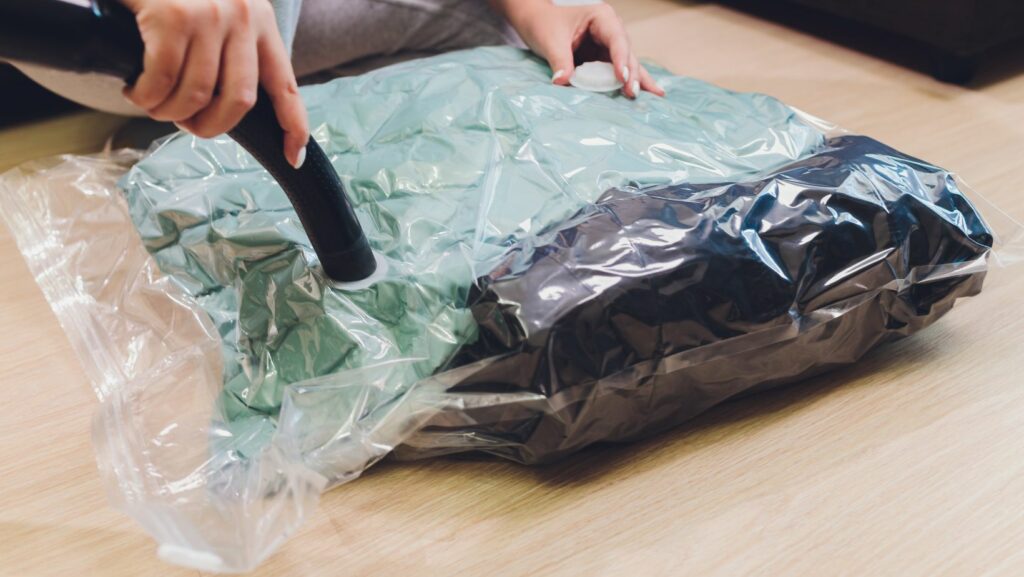Table of Contents
ToggleHow to Use Vacuum Seal Bags
Are you wondering how to make the most of your vacuum seal bags? Look no further! In this article, I’ll guide you through the step-by-step process of using vacuum seal bags effectively. Whether you’re preserving food, protecting valuable items, or maximising space in your luggage, these tips will help ensure optimal results.
To begin, start by selecting the appropriate size and type of vacuum seal bag for your specific needs. Vacuum seal bags come in various sizes and can be used with both handheld and countertop vacuum sealing machines. Once you have chosen the right bag, it’s time to prepare your items for sealing.
Firstly, ensure that the items you want to store are clean and dry. Moisture can affect the quality of the seal and lead to potential mould or mildew growth. Next, place your items into the bag, making sure not to overcrowd it. Leave enough room for proper air extraction during the sealing process.
Now comes the crucial step: removing air from the bag. If you’re using a handheld vacuum sealer, simply attach it to the designated valve on the bag and activate it until all excess air is extracted. For countertop vacuum sealers with built-in suction capabilities, follow their specific instructions for achieving an airtight seal.
Once all air has been removed from the bag and it is tightly sealed, store it in a cool, dry place away from direct sunlight or extreme temperatures. This will help maintain freshness and prolong shelf life.
Using vacuum seal bags is not only practical but also a great way to organise your belongings efficiently while keeping them protected. By following these simple steps on how to use vacuum seal bags correctly, you’ll be able to maximise storage space and keep your items fresh and secure for longer periods.So let’s get started on this exciting journey of utilising vacuum seal bags effectively!

Choosing the Right Vacuum Seal Bags
When it comes to preserving food and extending its shelf life, vacuum seal bags are a game-changer. But with so many options available in the market, how do you choose the right vacuum seal bags for your needs? Let me guide you through some key factors to consider:
- Material: The material of the vacuum seal bag plays a crucial role in ensuring optimal preservation. Look for bags made from high-quality, BPA-free materials like polyethylene or nylon. These materials provide excellent durability and resistance to punctures, tears, and moisture.
- Size: Vacuum seal bags come in various sizes, so it’s important to select ones that accommodate your specific needs. Consider the quantity of food you plan to store and choose bags that are large enough to hold your items comfortably without wasting excess space.
- Compatibility: Not all vacuum sealers work with every type of bag. Before purchasing, check if the bags are compatible with your particular vacuum sealer model. Some manufacturers offer their own branded bags designed specifically for their machines.
- Thickness: The thickness or gauge of the bag determines its strength and ability to withstand pressure during sealing and storage. Thicker bags offer better protection against freezer burn and are ideal for long-term storage of meats or other bulky items.
- Features: Some vacuum seal bags come with additional features like zip-top closures or textured surfaces for enhanced air removal. These can be beneficial when storing delicate items or liquids that may require extra protection.
By following these steps, you’ll be well on your way to effectively using vacuum seal bags for preserving and storing a variety of items. Properly preparing your items ensures that they remain fresh, protected, and ready to use whenever you need them.
Remember, practice makes perfect, so don’t be discouraged if it takes a few tries to get the hang of it. With time and experience, you’ll become a pro at using vacuum seal bags to extend the shelf life of your favourite foods and optimise storage space in your kitchen.

